June is Pride Month—thirty days of celebrating the LGBTQ+ community. Parades and parties are held throughout the world. While some countries celebrate pride month in February, August, or September, Pride Month in June began in the United States to remember the 1969 Stonewall Riots. Israel celebrates Pride Month in June with main events during the second week of the month, culminating in a Pride Parade and dance party on the beaches of Tel Aviv.
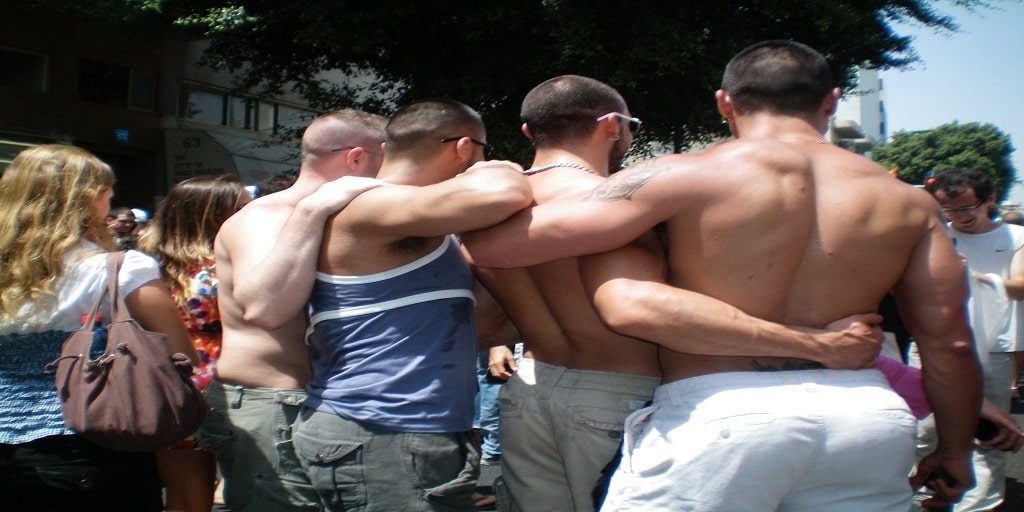
The fight for equal rights in Israel began fairly quickly after Israel gained independence in 1948.
In the 1950’s, the police arrested Rina Natan for “breaking public order” by wearing female clothing while biologically male. However, the government later concluded that they could not charge her for wearing women’s clothing and released her. The incident pushed her to become vocal in Israel for transgender rights, specifically protesting the inability to receive treatment and resources for transitioning from male to female. Attorney General Haim Cohn was particularly active in preventing these measures in 1954. In 1956, Natan severed her male genitalia herself, forcing Israeli hospitals to treat her and leading her to become the first transgender woman in Israel. Despite her transition, the government never changed her name or gender on her passport. Being titled as Israel’s first transgender rights activist, her story led the Israeli government to recognize AND permit sex reassignment in 1986.
In 1960, Rina Ben Menachem, Israeli artist from Bnei Barak and Ein Hod, published her first book “HaDavka’im,” describing the gay and lesbian scene in Israel from her own experiences. The next year she published a second book, focusing primarily on the lesbian experience in Israel.
Five years later in 1968, Amir Sharon Tel Aviv’s first gay bar in a private apartment. In 1988, the Israeli government passed Amendment 22 of Israeli Penal Law, decriminalizing same-sex sexual relations. Employment discrimination protections for the LGBT community were also passed in the 1980’s. The Knesset revised military rules enabling LGBT soldiers to serve openly and have equal footing with their straight counterparts. In 1998, Dana International, a trans woman, won the Eurovision Song contest with her song “Diva.” This opened up the door wide open for Trans pride both in Israel and internationally. Pride Parades began in Israel began in the 1990’s, primarily in Tel Aviv before spreading to Jerusalem and Eilat in the 2000’s.
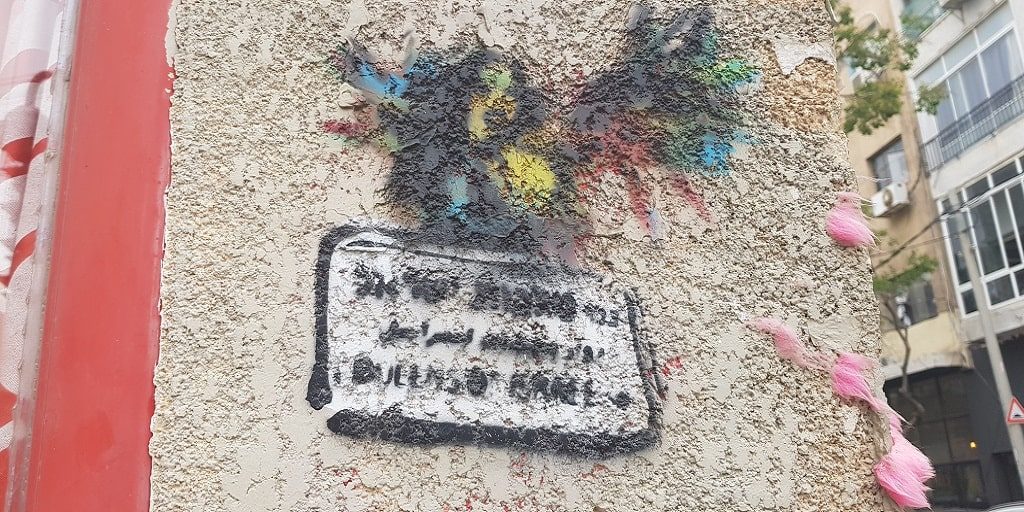
This is a short history of the LGBT+ community in Israel.
But it’s important to know and it’s important to start from here. Because without understanding the history, we cannot understand today. Without understanding the history, we cannot build for the future. And one of the images that we know most today is the Pride Parade of Tel Aviv.
The first Tel Aviv Pride Parade was held in 1993.
However, the first ‘Pride’ event to take place in Israel was a protest in 1979 at Rabin Square. The name of a pride parade came from the similarity of the English word “gay” and the Hebrew word for pride, “geh-eh” (“גֵאה,”). It became a sort of play on words, and the labels “proud” and “Pride Parade” emerged spontaneously. It is also an international term as well. From the first Tel Aviv Pride Parade, Tel Aviv has become a center for the LGBTQ+ within Israel. There is a center for the community in Meir Square, and many LGBTQ+ Israelis find Tel Aviv a safe haven of acceptance and tolerance.
Thousands of people come from around the world for the Tel Aviv Pride Parade. Support groups call Tel Aviv home. There are even tours exploring the LGBT scene and history in Tel Aviv. The Rainbow Tours are AMAZING, and are highly recommended.
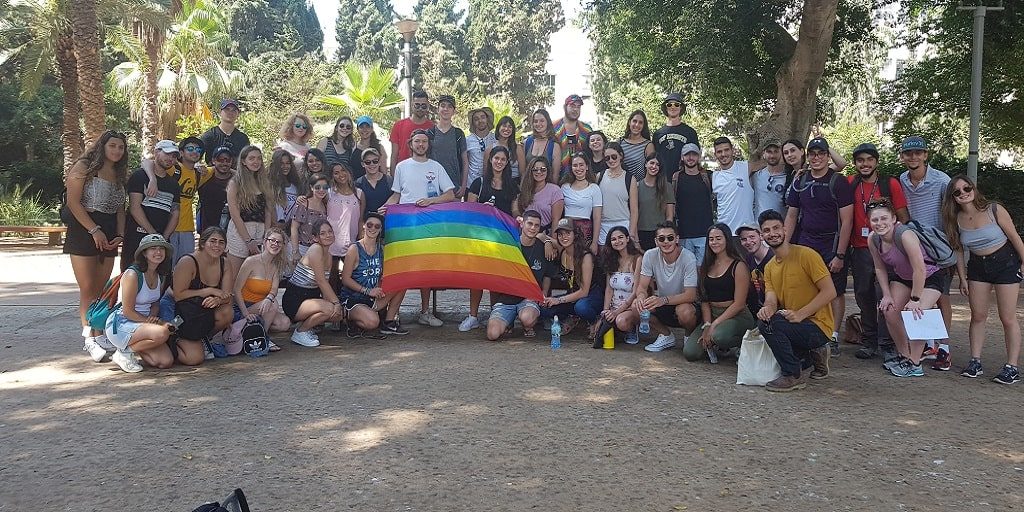
But not all Pride Parades are so successful, and not all cities have opened their arms to their LGBTQ+ communities.
Jerusalem’s fourth Pride Parade took place on June 30, 2005.
Originally the municipality banned the even, but the courts overruled the ban. The ban came from religious leaders—Jewish, Muslim, and Christian—of the city. And that touches on the very struggle Jerusalem searches to balance. You see, there is this idea that everything Tel Aviv is Jerusalem is not. And everything that Jerusalem is, Tel Aviv is not. There is even graffiti about it in Tel Aviv.
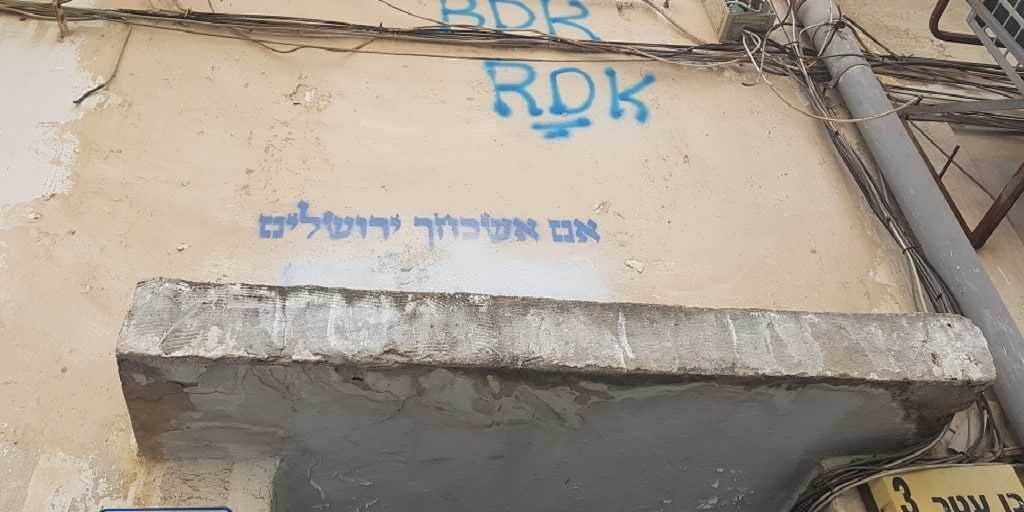
So if Tel Aviv is the center of the LGBTQ+ than Jerusalem has troubles accepting the community. Part of that comes the fact that Tel Aviv is a religiously secular city and Jerusalem is a strictly religious city. Yes, there are religious neighborhoods in Tel Aviv and secular residents in Jerusalem. But it is known throughout Israel that Tel Aviv is secular and Jerusalem is religious. Tel Aviv does not have to balance the religious aspects with the LGBTQ+ community. Jerusalem is the holiest city to Judaism and Christianity. It is the third holiest city in Islam. There are churches, synagogues, mosques, and holy sites throughout the ENTIRE city. And none of the religions accept LGBTQ+ in their theologies. That does NOT cancel out the rights of the LGBTQ+ residents of Jerusalem. But there are tensions.
The Fourth Pride Parade in Jerusalem was a boiling point in those tensions.
During the parade, a Haredi (ultra-Orthodox) man named Yisha Schlissel attacked three people with a kitchen knife. The courts sentenced him to ten years in prison. Ten years later in July 2015, Jerusalem held the Pride Parade again. Yishai Schlissel was released from prison and attacked six marchers with a knife again, including teenager Shira Banki. She later died of her wounds. “Tolerance Square” in central Jerusalem is named in her memory.
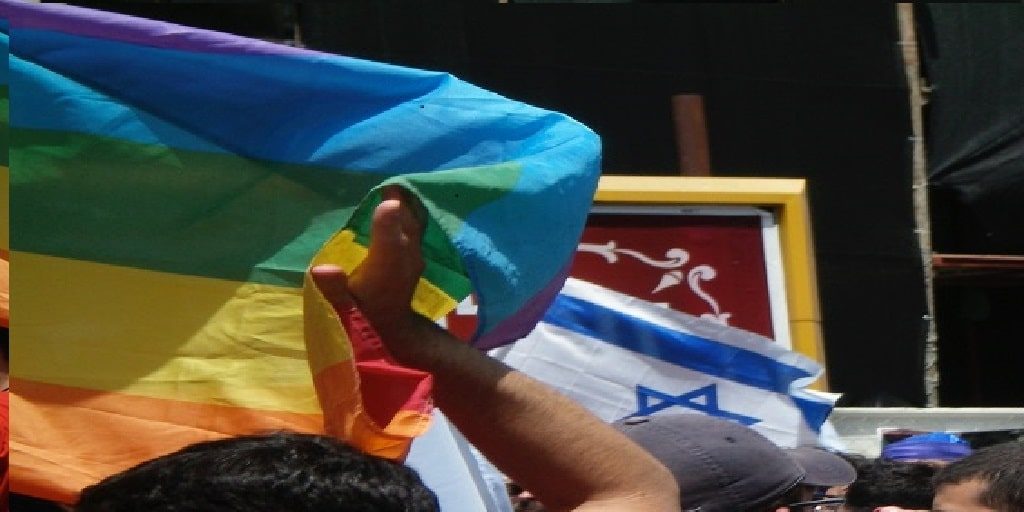
Why is all of this important? Why do I urge you all to care?
Because just like I’ve written about the different waves of immigration to Israel in order for all of us to understand the different communities, we have to understand this community in Israel as well. When we understand the story of the Yemenite community, and the Ethiopian community, and the Russian community, AND the LGBTQ+ community, we understand the mosaic of our country. We understand how each community brings something beautiful and unique to the table—a different colored thread to the tapestry of Israel. If one community is suffering, we all suffer. If ALL the communities thrive, our country thrives.
This Pride Month has been different from years past. The Coronavirus Pandemic has affected countries around the world, and prevented gatherings like Tel Aviv’s Pride Parade. To make up for it, I urge everyone to do something else in honor of Pride Month. Read one of Rina Ben Menachem’s books, watch one of the documentary’s produced by the Israeli TV channel Kan, discuss the importance of acceptance with loved ones, pledge to go on a tour of Tel Aviv’s LGBTQ+ scene when things begin to open up. Maybe through this means, even more people can celebrate Pride Month.


